|
Technical PC training of YBET Informatique |

|
| YBET | Hardware course |
20. Safeguard, backup and loadings peripherals.
20.1. Introduction - 20.2. CD-Rom reader - 20.3. CD Writer - 20.4. DVD-Rom - 20.5. DVD writer - 20.6. Tape readers - 20.7. High capacities diskettes - 20.8. External hard disk
20.1. Introduction.
This chapter treats removable peripherals: CD-Rom and DVD readers and writers, Zip and associated, tape readers... The tape readers the top-of-the-range one in SCSI (high capacity) will be seen in second year (backup and network storage).
The possibilities to save data and programs are various: tapes, second hard disk, on network, discs cloning software, USB memories, ... Each one has its advantages and its defects. For professionals, tape readers have an excellent price ratio/capacity but are slow with the safeguard, and even more with the restoration. On the other hand, they make it possible to save the complete system, including the programs and configurations systems. This solution makes it possible to make safeguards automatically. The CD and DVD writer, USB memories currently supplant the other solutions as each PC is provided with a reader of DVD-Rom and USB ports. Only problem, no real solution for automatic save (except with latest versions of Windows but not with Windows 8). Save content of your hard disk on a second disk hard or connected in a second PC in network makes it possible to directly safeguard the data, but not the programs. That the same principle with external hard disk.
The software cloning (most famous is Ghost of Symantec) makes it possible to save the whole of your hard disk, to recopy hard disks or to even make images of safeguard. Unfortunately, a restoration erases all the hard disk (or the partition) of destination, including the not backup data. The use of such a program requires partionning hard disk by FDISK. The principal partition receives the programs, the secondary partition receives the data and the image of the principal disc.
The backup are a compromise between these various solutions
20.2. CD-Rom reader
20.2.1. Interface
CD-Rom are interfaced either in E-IDE, or in SCSI (rarer). The maximum capacity of Cd is 640 MB or 70 minutes audio. Some media authorize 700 MB of data is 80 minutes.
The CD-Rom readers are interfaced in E-IDE, you cannot thus install a CD-Rom reader on one 286, 386 and even out of some 486 of the first generation interfaced in IDE. It is necessary in this case to install a sound board with additional CD-Rom interface (what becomes rather rare).
20.2.2. Speed
Speed is described like X. The value 1X corresponds to the reading rate of an CD-audio and is equivalent to 150 kB/s. This speed is that obtained with the external part of the disc and not that of the internal part. As the engraving of CD begins inside the disc, it is seldom obtained. Moreover, in the event of difficulty of reading, the reader decreases its speed automatically. The reading rate of a reader CD also refers to the access time of the reader, and there, the real performances are visible. The readers starting from 24X do not read any more at constant speed. Their rise speed is slower. For small files, a 24X is practically equivalent to a 50X. Current speeds reach 56X
20.2.3. Operation.
CD-Rom offers a great storage capacity: 650 (700) Megabytes on a disc 12 cm in diameter identical to an CD-Audio.
Diagram of operation.
Sight under the electron microscope of surface of CD.
The reading is carried out by a laser beam which sweeps the surface of CD. The bits of data are coded in the shape of small basins (return the laser beam) and of peaks (do not return the beam). Thus information is collected. The CD-Rom readers include a method of correction for damaged CD (up to a certain point).
The reading of the data is done in the form of spiral, from the external edge towards the center
4 methods of reading are used:
. technology CLV (Constant Linear Velocity), obsolete. The flow of the data is always constant, which implies that the number of revolutions must vary, slower as the beam approaches the edge. Nevertheless, a reader 52X implies a rate of transfer higher of 52X than an audio reader, not that the number of revolutions is 52 X higher. By way of example, the number of revolutions on a reader 4X varies between 800 and 2120 turns per minutes. For a reader 52 X, this would involve a speed varying of 10.400 with... 27.560 turns.
. Technology Z-CLV is an evolution of the CLV and its principle is identical except that speed is constant by stages. At the beginning of the reading (or engraving), it is the interior part of the disc which is used. Consequence, the flow of information is high. On the other hand, more one approaches the end of the disc (external zone), more the constant flow of information at speed is weak. The disc thus turns at a certain speed during the first part of reading, then on the following part, speed increases, and so on. The use of this technique in CD engravings obliges with a mechanism of control of flows since there is a small rupture of engraving at the time of the passage one to mitigate the other. This technique nevertheless is used in the majority of the s.
. Technology CAV does not work at constant speed like the CLV but well at constant angular velocity. The flow of transferred information is thus constant.
. technology PCAV (Partial Constant Angular Velocity). The flow of data is not constant, it is the number of revolutions. This implies that the data flow is higher than the center (but the probability of finding data outside is filled only if CD is full). As electronics would not really follow, the reader passes by again in CLV automatically from the 2/3 of the disc and the number of revolutions decreases so that the flow does not increase any more (what the partial term in the name of technology indicates).
The consequence of these technologies is that a good 24 X can be faster than "a bad" 32X or more.
20.2.4. Types of CD.
Defined in 1982 by Philips and Sony, the CD-DA, more known under the name of audio CD was the first standard of CD. Audio CD can contain 747 MB of audio data on 99 tracks, each track having to contain minimum 4 seconds of sound. This surplus of space compared to the CD-R is related to the nature of the audio data, which use the totality of space and does not encumber bits of correction, this task being carried out by the reader or CD platinizes it. On audio CD, the sound is sampled to 44,1 Khz in 16 bits, and on 2 stereo channels.
The CD-R rises at the beginning from audio CD but from less capacity. Indeed, the computer files need bits of error and corrections. A part of each sector is used as heading. In the last, two type of sectors were defined at the beginning: the mode 1, which one generally uses at the time of our engravings and the mode 2 which allows a better management of storage and transfer of the video and images. This last mode is used, put rather little aside for CD-Rom XA and TDCI.
Cd-Rom/XA and TDCI rise from the same technology. Cd-Rom/XA, which means CD-Rom with advanced architecture is in fact used only seldom under this name in CD intended for general public. One thus finds them under the term TDCI. It is structured in an interactive way in order to allow a mixture of various media. Standards are clearly defined for this type of media.
CD multisessions (multiread) were invented by Kodak. It makes it possible to store its images progressively films used. Whereas traditional CD contains only one matter table, CD multisession contains some as much as sessions. This makes it possible to use in time CD progressively. Other side of the coin, the creation of a session requires 20 MB per contents. CD must also be formatted beforehand. This method of engraving generally uses the UDF standard. The writing is made sector by sector. All the current s are able to write on a CD-R in multisessions.
20.3. CD Writer.
If CD-Rom "commercial" are in a hurry, the amateurs and certain editors of programs provide the software in the form of engraved CD. The current s allow to create 2 types of CD: engraved CD and rewriteable CD (CD-RW). The capacity of rewriteable CD is less than that of CD-Rom normal (500 to 550 MB) since the must reserve on average 130 MB with the table of the data, the place where the contents and the structure of CD are progressively registered writings and rewritings. The s also allow to read Cd (data-processing or audio). Nevertheless, the access time is definitely lower than that of the normal CD readers. Engraving makes it possible either to copy certain files, or to copy CD directly (audio or data-processing).
The technologies used for engravings are identical to those of readers CD (CLV, Z-CLV, CAV or PCAV following the models). The speed of engraving is identical to the reading rate of the CD-Rom readers: 1X corresponds to 150 KB/s. For 74 minutes audio CD, the speed of engraving in 4X is thus of 74/4 = 18,5 minutes.
The current CD Writers include a buffer memory, which avoids the cut of the flow of information during writing (over-burning, Just-link...) that we will detail below.
The interface is either IDE, or SCSI for the internal models. In the case of the external readers, the first were are SCSI (rare), is connected on the parallel port. Currently, with the fashion, the external s all are practically USB.
Print head of an CD.
20.3.1. General operation.
The basic component of a support CD-R is a layer of organic dye which can be either containing cyanin, of color blue cyan, or containing phthalocyanine, more or less colorless. The reflective layer is is based on money alloy (silver), evening based on gold (gold) 24 carats.
There is thus CD-R of appearance or/or, green/or, argent/bleu, and argent/argent. The apparent color is given by the color of the reflective layer (gold or money) and the color of the organic dye (blue cyan or transparency).
20.3.3. Over-burning
It is possible to use CD of greater capacity: 700 MB/80 '. Nevertheless, to engrave on these CD, one needs 2 conditions: that the software of engraving accepts the overburning and that the supports the writing in mode "Disk At Ounce". Certain former s break down following tests.
20.3.4. Just Link and Burn-Proof
The problem of the s remains the sending of the data at sufficient intervals. When the data are not present any more in the , there is a rupture of flow. This involves in the former s to stop engraving for lack of data. Result, the media is unusable. To correct this type of errors, the manufacturers use techniques which suspend engraving when data are not present, and takes it again as soon as the data are again present in the buffer. This technique is called JUST LINK at the majority of the manufacturers, Burn-Proof at Plextor. A message at the end of the engraving of the type "265 ruptures of flow avoided" is not error, but well an indication of the software. This makes it possible to work while engraving.
20.4. DVD-Rom
20.4.1. Introduction
A reader DVD (digital changeable disc) can read all the types of CD (audio Cd, CD-Rom, CD-R and CR-RW). Nevertheless, their principal asset is of being able to read the DVD. The capacity of the DVD is definitely higher than that of CD-Rom: 4,7 GB into simple face, simple layer, but up to 17 GB in double face, double layer (1024). The principal current use of these DVD is the video film reading.
The speed of a reader DVD is not in connection with that of traditional CD. Indeed, 1X is equivalent to 1350 KB/seconds (either 9 X higher).
20.4.3. Video readings.
In the case of video films, the reader is coupled with a decompression board MPG-2 (attention 8 character sensing fields). To protect the exits from film to the cinema before the exit in cassette and DVD, films are coded differently. Zone 1 takes again the United States and Canada, zone 2 takes again Europe, Japan, South Africa and Moyen the East), zone 6 takes again China. Notes that 2 zones are not used: 7 and 8. You can find on Internet of the programs or even Re programming allowing to read various zones with the same reader for the DVD and the decompression board. The reading of DVD does not require any more a specific graphic board.
Until now, the majority of the material intended for the reading of the Video DVD, decompression board and reader DVD, were not coded in a material way and it was easy to circumvent the protection of the software of reading like Cinemaster or Win DVD. But at dawn of the year 2000 and considering the facility with which software protections could be diverted, the DVD Forum required that all the readers of DVD of ême generation should be RPC-2, i.e. zones in a material way. Thus, when you buy your reader this one is `' neutral' ', but dice that you will insert a DVD Video there, there will remain to you only 4 possible changes of zone.
20.4.4. Operation
If CD emits an invisible beam (infra-red) of 780 nanometers, the DVD employs to him a visible red light whose wavelength is either 635, or 650 Nm. They are these 2 wavelengths which make it possible to read the multi-layer ones. The 2 layers of data are not consisted of the same matter. The first layer is a translucent layer, whereas the second layer is a more traditional reflexible layer. The laser, at the time of the reading, crosses the first translucent layer to read the data of the second layer, then changes the x-ray one to read the first. This exercise of style is supported by a device of correction of errors 10 X higher than that of a reader traditional CD. A buffer (buffer memory) ensures the reading continues data between the layers.
20.5. DVD Writer.
In 2002, several formats of engraving DVD are present on the market. Two groups of manufacturers clash: Forum DVD and the DVD Alliance (Philips). Some manufacturers start to insert the two systems in their s.
The DVD-R (Forum) is inscribable once. The support is relatively cheap and compatible with nearly 80 % of the readers.
The DVD+R (Alliance) is inscribable once also. The support is more expensive, but compatible with nearly 85 % of the readers of the market.
The DVD-RW (Forum). Identical to the DVD+RW, it registers nevertheless 2 times more slowly.
The DVD+RW (alliance) is compatible with 65 % of the readers. It is rewriteable approximately 1000 times.
The DVD-RAM (forum) is rewriteable 100.000 times. Engraving is definitely slower than the 2 rewriteable readers above. The discs to be engraved are condition out of hard plastic. It is thus useless hope to use CD thus engraved in a reader of traditional DVD. The capacity of media is of 2 times 2,6 GB in double façe (it is thus necessary to turn over the media for each face).
Readers DVD-Rom and DVD-RAM are thus 2 completely distinct equipment for early models (now, all accept the two standards). On the other hand, readers DVD-RAM all formats of CD-Rom media : Cd-Rom, CD-R/W, CD-DA, CD-Extra, Photo-CD and Video CD. The DVD-RAM can be read only by the DVD-Rom of the last generation. The principle of operation of these media uses a technology with phase shift.
20.6. Tape reader
20.6.1. Introduction.
Tapes uses a similar magnetic tape with an audio cassette. The price of these magnetic cassettes is generally weak. The associated programs make it possible to choose the files/files to be safeguarded (to restore) and automatically to safeguard them on certain dates/hours. If these systems have had their hours of glory, the capacities of the current hard disks coupled with the speed of transfer of these safeguards (except professional systems DAT that we will see in second year) limit their use.
These systems of band allow the complete safeguards, including the bases of registers of different the version Windows 95-NT. One distinguishes 3 types of safeguard. An intelligent safeguard is a mixing of these 3 types
Complete backup: save the whole of hard disk. This safeguard is very sure, but is long.
Incremental backup: safeguard only the files which were modified since the last safeguard. A restoration thus requires to recover a complete safeguard initially and then to take again the incremental restorations.
Differential backup: copy all the files since the last backup complete or incremental. Indeed, this mode of safeguard does not modify the bit of file of the files.
20.6.2. Types.
One finds on the market three types different of safeguards on tape: QIC/Travan, DAT (4 and 8 mm) and DLT.
System QIC (obsolete) is characterized by weakest capacity (less than 4 GB, except cases exceptional) and the relatively slow speed of safeguard. The QIC suffers of more than multitude of format incompatible between-them. QIC is reserved for the personal applications.
DAT technology is most widespread. It is divided into 2 category: 4 and 8 mm, in reference to the bandwidth. The 4 mm have a capacity of 2 even 4 GB. The 8 mm have a capacity higher than 5 GB. The performances of the DAT are correct, but the talks are expensive: the safeguards DAT use a mobile head which use the bands.
Technology DLT is distinguished from mode QIC and DAT by high capacities (more than 10 GB in native mode) and amply higher speeds of execution. More expensive, they are also more reliable. Their read head is fixed and the more resistant cartridges. The heads can simultaneously read and write data on several channels (bits in parallel). By using a compression of 2:1, certain DLT ensure a theoretical flow of 3 MB/S. By comparison, the DAT and QIC approach hardly the 1,5 MB/seconds. The use of fixed heads also allows a longer longevity of the apparatus (10.000 hours in averages for 2.000 in technology DAT). Other sides of the coin, these apparatuses are expensive with the purchase and are thus reserved for heavy applications of servers type.
The compatibility of the media can be done only in one same family. Be wary particularly of the QIC, where the various manufacturers propose similar bands of capacity, if not equal, but incompatible enters they (ex: Hewlett Packard and IOMEGA). Moreover, the software enters in account for the writing of the data.
20.6.3. Supports QIC (obsolete)
The bands of readers QIC consist of an electromagnetic support, identical to that of the audio cassettes.
Units with the format of the diskettes 3,5"
It is the company 3M which developed the Travan cartouches and deposited this mark. They are marketed by 3M, but also by Seagate, Sony, etc. The bandwidth is 1/4 of inch, which is indicated by OIC (Quarter Inch cattridge) -
Their first advantage lies in the fact that the unit of read-write is with the format of the units with disc 3,5". So it is compact and, in a bay, replaces disk drive.
The second reason of their success is their capacity. They exist in versions:
TR-1 (QIC-80), of 400 Mo nominal and 800 Mo compressed.
TR-2 (QIC-3010), of 800 Mo nominal and 1,6 Go compressed.
TR-3 (QIC-3020), of 1,6 Go nominal and 3,2 Go compressed.
TR-4 (QIC-3080), of 4 GB nominal and 8 Go compressed.
TR20, of 10 GB nominal and 20 GB compressed
TR40, of 20 GB and 40 GB compressed.
Two last equipments are still developed by Quantum
More powerful versions appear regularly. Cartridges TRAVAN are identical, they were developed to compete with 3M under other marks (in particular HP).
The third reason is their lifespan. When a magnetic tape is read or written, the magnetic heads rub on it. The manufacturers thus guarantee them for a typical use from 500 to 1 500 passages, reading or writing. A checking of the band corresponds to two passages. Software of management of the band the calculation. When it announces to you that it arrived at 0, most careful is to replace it.
The fourth reason lies in one brewed of technical innovations, such as an anti-static safety, an alignment and a more rigorous positioning, a protection counters foreign particles on the tape.
Precautions to be taken As all the magnetic cartridges, the QIC/Travan are hardly fragile, but fear moisture, the variations in temperature and too dusty environments. The software of management makes it possible to retighten them time with other.
20.7. High capacities diskettes.
20.7.1. Introduction
With its low storage capacity, the diskette is exceeded. Some firms tried to develop a standard. Among them: IOMEGA and its ZIP accompanied by firm SYQUEST are known, although at the end of 1999, SYQUEST is practically in bankruptcy.
All these readers use a magneto-optical process. This allows a high reliability of the media.
20.7.2. IOMEGA Zip 100 MB, 250 MB and 750 MB.
Initially left in version SCSI (intern and external), the zip 100 MB was then connected on the controller disk drive in his internal versions. Currently, the zip 100 MB intern are connected on port IDE.
IOMEGA left a Zip version 100 + external, suitable for connection on a port SCSI or parallel. This model posed several problems of incompatibility with a printer connected to the continuation.
Reader IOMEGA is practically a standard in Mac, it is often used by the printers. So the use of a PC for created print files towards the printers is practically the ideal.
In 1998, IOMEGA left a version 250 MB its reader ZIP. If the parallel version existed, it is replaced by a version USB 1.0. In-house, connection is done in IDE or SCSI.
Last innovation in 2002, the version 750 MB. This version can be internal (IDE) or external (USB2.0, compatible 1.1 or firewall left in January 2003). The readers Zip 750 MB are completely compatible with the versions 250 MB (reading and writing). On the other hand, if they can read the diskettes Zip 100 MB, it cannot use them in writing.
20.7.3. LS-120 MB of Syquest.
The LS-120 of Syquets used media of 120 MB. Its bad performances did not decide the manufacturers of PC to install it directly, in spite of the possibility of reading diskettes 1,44 MB standard. It nevertheless is often taken again like possibility of starting in the BIOS
20.7.4. Memories on ports USB (stick USB)
Another method to use ports USB for the safeguard consists in using memories flash called keys USB directly on port USB 1.1 or 2.0. The capacities go up to 64 GB. Speed is rather slow in USB 1.1. These peripherals are directly recognized by Windows 2000, Millenium and following (not Win98 and inevitably not by Win95 and NT4 which does not recognize the USB)
20.8. External hard disk.
With the arrival of the connections firewire and more still with the USB 2.0 at the end of 2002, a majority of hard drive manufacturers leave the external discs of great capacity (up to 160 GB). The price is nevertheless quasi the double compared to a hard disk interns faster equivalent. You can also use adapters, kinds of cases connected in USB or firewire where a standard hard disk is inserted. Models exist for hard disks IDE 3"5 and 2"5 (specific notebook). They replace Sparq from Syquest or Jazz from Iomega.
In relation:
- Course: IDE and SATA hard disk Operation, limit, installation...
- backup and network storage Hardware 2 course: Network storage equipment
- Introduction to microprocessor Hardware course, microprocessor based system
- The floppy disk drive Floppy drives for computers PC
|
The continuation of the hardware 1 course > 21. Case, power supply AT - ATX, motherboard |
The hardware course 1 (computer and peripherals) - The Hardware course 2 (networks, servers and communications)
Competences with the service of quality.
